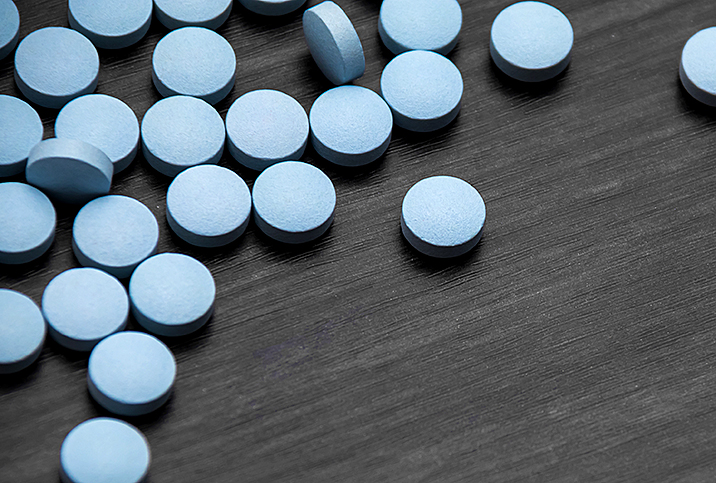Improving Prostate Health

It's not just possible, but more likely probable a man will face a prostate issue at some point in his life, according to the Harvard Medical School annual report on prostate diseases. For example, about 80 percent of men will eventually develop benign prostatic hyperplasia (BPH), which is a noncancerous, enlarged prostate.
While the report suggests BPH, prostate cancer or prostatitis (inflammation of the prostate gland) is likely in the future for most men, it also notes no easy solutions exist once a prostate issue emerges.
However, getting ahead of the problem is a different story. Men have various options to prevent or at least delay prostate complications, including a wide variety of easily achievable lifestyle choices that will impact their prostate health significantly.
What is the prostate, and what can go wrong?
The prostate is a vital cog in the machinery of male sexual function. It's a walnut-sized gland found near the bladder and in front of the rectum, and it is responsible for making some of the fluid in semen and for propelling semen out of the penis when a man ejaculates.
Early signs of poor health in the prostate—because it surrounds the urethra and is located so near the bladder— include difficulty starting to urinate, needing to urinate frequently or an inability to urinate altogether. Difficulty urinating may seem mild, but untreated BPH can lead to infections in the kidney and bladder, damage to the kidney and kidney stones. In addition, these symptoms can sometimes arise with prostate cancer, so get checked regularly and be sure to see your doctor if you experience any changes in urination.
Prostate cancer is the second most common cancer to affect men in the United States; 248,530 new cases are expected to be diagnosed in 2021, with more than 34,000 expected to die from it, according to the American Cancer Society (ACS). Though the exact causes of prostate cancer remain unclear, the disease begins when cells in the prostate start to grow and divide more rapidly than normal. When this happens, abnormal cells accumulate and form a tumor on the prostate. If the tumor is not detected early, it may spread to nearby tissue, and in the worst cases, abnormal cells from the tumor can break away and spread to other parts of the body—a phenomenon known as metastasis. However, the overall outlook for men with prostate cancer is positive, with a 15-year relative survival rate of up to 96 percent. This is largely due to the prevalence of early detection and treatment.
There's no way to absolutely prevent any of these conditions, but there are ways to bolster your defenses by making good lifestyle choices. Consider implementing one or more of the following options so an unplanned doctor's trip is less likely.
Check your diet
Make sure you get five servings a day of vegetables, especially the green leafy kind, as they may lower the risk of aggressive prostate cancer, according to a 2011 study in the journal Nutrition and Cancer. The same study indicated a possible benefit to foods that contain carotenoids, such as carrots and sweet potatoes. Additionally, eat plenty of watermelon, pink grapefruit and tomatoes, because they contain lycopene, a substance believed to reduce the likelihood of developing prostate cancer, according to government studies.
Take note that grapefruit can have adverse interactions with some prescribed drugs, which in turn can cause kidney failure, respiratory issues and internal bleeding. Particularly, grapefruit and grapefruit juice interact poorly with cholesterol and blood pressure medicine, anti-anxiety medications, antihistamines and more. Speak with your doctor before adding grapefruit to your daily regimen.
Along with adding certain foods to your diet, consider eliminating or limiting others. Reducing the intake of red meat can protect your prostate significantly. One study of 175,000 men suggested people who ate the most red meat had a 30 percent greater chance of developing prostate cancer. Skip the fountain machine and the bakery, too: One study, which followed 22,720 men for nearly a decade, indicated a correlation between the amount of concentrated sugars the men consumed in beverages and desserts and the increased incidence of prostate cancer.
Get moving and get outdoors
Multiple studies indicate even low to moderate physical exercise, such as regular walking, reduced men's chances of developing BPH. What's more, men who had already developed prostatitis and prostate cancer and exercised regularly saw better results than those who didn't. For prostatitis, aerobic exercise proved especially effective, and men with prostate cancer who walked briskly for three hours a week were 57 percent less likely to have their cancer progress. Additionally, another study found men who exercised vigorously three hours a week to be 61 percent less likely to have their cancer progress.
It's worth the effort to take your workout outside, too. Vitamin D has been shown to help prevent certain cancers, help with cognitive health, stave off osteoporosis and more. While the evidence doesn't conclusively establish a beneficial link between vitamin D intake and prostate cancer, at least one study suggests vitamin D supplementation can help.
Our body makes this crucial nutrient when it is exposed to the sun, but you can also get it naturally from fortified milk, fortified cereal and fatty fish, such as salmon and mackerel, or you can buy an over-the-counter supplement. If you go the all-natural route, remember to wear sunscreen to protect against UV radiation. Men are twice as likely as women to develop skin cancer.
Maintain a healthy weight
While researchers are quick to point out prostate cancer is a complex disease with a variety of causal factors, there is a strong correlation between obesity and aggressive prostate cancer, and the risk spikes sharply with the severity of obesity. The journal Prostate International suggests this might be because of decreased testosterone and increased insulin, among other factors. Obesity is also linked to BPH, again for a number of factors. Researchers suspect that intra-abdominal pressure, hormone changes, increased activity in the sympathetic nervous system, higher rates of inflammation and oxidative stress may play a role here.
Luckily, the attention to diet and exercise that can directly help your prostate can also indirectly help it by combating obesity.
Drink your coffee, but cut back on the booze
A 2011 study in the Journal of the National Cancer Institute indicated men who consumed six or more cups of coffee per day had about a 20 percent lower chance of developing any kind of prostate cancer. Men who had one to three cups per day had a 30 percent lower chance of developing lethal prostate cancer. (This was a correlation study; we're not recommending you pursue a six-cup-a-day coffee habit to prevent prostate cancer.) While you fill up your coffee mug, maybe put away the whiskey glass: A long-term study of a group of Harvard alumni found liquor was positively correlated with up to a 67 percent greater chance of developing prostate cancer. Interestingly, wine and beer consumption showed no such link.
Work with your doctor
Healthy lifestyle choices can help with prevention, but in case a problem does arise in your prostate, discuss your options with your doctor. Treatments ranging from prescription medicine to surgery can significantly improve BPH symptoms. If you're worried such symptoms might actually indicate prostate cancer, and you're 40 years old or older, talk to your doctor about beginning regular prostate exams.
Prostate exams include the digital rectal exam (DRE) and the prostate-specific antigen (PSA) test. During the DRE, the doctor will insert a gloved and lubricated finger into the rectum to physically feel the prostate. They will estimate the prostate gland's size and feel for nodules, hard spots or unusual bumps, which can indicate a cancerous tumor. The PSA test checks the levels of prostate-specific antigen in your blood. PSA is a protein produced by both cancerous and noncancerous tissue in the prostate. Normal levels are less than 4 nanograms per milliliter of blood, so higher levels can be a red flag for cancer. These are not diagnostic tools so much as they predict a chance of cancer; further tests are necessary to confirm the diagnosis. Regular screening will increase your chances of early detection and, therefore, easier treatment.
By taking your prostate health into your own hands, and by keeping your doctor informed and involved in your efforts, the likelihood and severity of prostate problems will lower significantly.


















